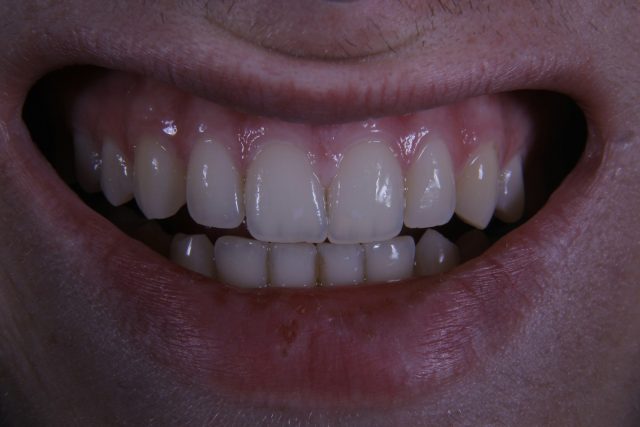
Worried about tooth decay or keeping dental visits safe for your kids? Many parents feel the same way. Fluoride varnish can help cut cavities by up to 40% in children. This guide will show you the key tools you need for safe fluoride application, such as gloves, trays, and fluoride toothpaste.
You will also learn how much to use and simple ways to keep enamel strong while avoiding dental fluorosis. Keep reading for easy steps that can help you care for your family’s teeth at home or during a visit to the dentist.
Key Tools for Safe Fluoride Application
To keep fluoride treatments safe, I always grab the right tools—this makes a big difference for dental health. Good applicators and protective gear help shield tooth enamel from too much exposure while fighting decay.
Fluoride varnish applicators
Fluoride varnish applicators come in small brush, swab, or sponge types, and I often use fluoride varnish cups to hold just the right amount for each patient. I use them to put a thin layer of sodium fluoride 2.26% or difluorsilane 0.1% on teeth. Each application uses about 0.2 to 0.5 mL and delivers between 5 and 11 mg of fluoride ion right onto the tooth enamel.
This helps fight dental caries and strengthens teeth against plaque acids.
I make sure the applicator touches every surface that needs protection but does not drip extra varnish into the mouth, which keeps swallowing low for patients under six years old. The American Academy of Pediatrics recommends this technique for cavity prevention soon after baby teeth appear; most kids need at least two treatments yearly for good oral health, as studies confirm from Canada and Europe dating back to the 1970s.
Disposable gloves and masks
I wear disposable gloves and masks each time I apply fluoride varnish. This step follows office infection control guidelines for dental care. Gloves stop cross-contamination between my hands, the patient’s mouth, and tools like fluoride trays or applicators.
Masks keep tiny droplets from spreading during application or toothbrushing instruction.
PPE protects both me and my patients from bacteria found in dental plaque or saliva. The American Academy of Pediatrics (AAP) recommends a steady supply of gloves and masks in every exam room to meet these standards.
Hospitals and clinics use at least 2 pairs per procedure to ensure safety with every topical fluoride treatment. After use, I remove PPE using safe steps to protect myself further.
Next, I select proper fluoride trays for applying gels or foam treatments.
Fluoride trays
Dentists use fluoride trays for safe, quick application of gels and foams with high fluoride levels like 1.23% (12,300 ppm). I place these trays in a patient’s mouth for 1 to 4 minutes to spread the gel or foam onto every tooth surface.
Offices choose single-use or disposable trays to stop germs from spreading. Fluoride trays work best for people at high risk of dental caries who lack fluoride in their drinking water or toothpaste.
The American Academy of Pediatrics recommends using professional-strength fluoride only under strict guidance, especially for young children. I never use these trays on kids under age six unless a health care professional says it is safe.
Infrequent treatments, about every three to twelve months, help lower fluorosis risks during early childhood tooth development. Next up are fluoride toothpastes and gels as other key tools for cavity prevention.
Fluoride toothpaste and gels
Fluoride toothpaste helps prevent tooth decay. Most U.S. brands use 1,000 to 1,100 ppm fluoride, while “child-strength” types offer only 250 ppm and are less effective against dental caries.
Some prescription pastes deliver up to 5,000 ppm sodium fluoride for people with high risk of cavities or early childhood caries. Children under age three need a smear or rice-sized dab; kids ages three to six should use a pea-sized dot to lower the chance of enamel fluorosis.
Over 95% of all toothpaste sold in the United States contains some type of fluoride: sodium fluoride, sodium monofluorophosphate, or stannous fluoride show up often on labels. Using any standard product boosts mouth fluoride levels by up to 1,000 times immediately after brushing teeth.
Self-applied gels like those with 1.1% sodium fluoride (5,000 ppm) require a doctor’s order and help adults at higher risk for root caries or weakened dental enamel due to oral disease or chronic illness maintain strong oral health between dental prophylaxis visits.
To see how these fit into proper application guidelines for every age group is key next.
Guidelines for Proper Application
I always check the right fluoride dosage for each person, use clear brushing techniques with fluoride toothpaste or gel, and pick the best tool—be it a cotton applicator or disposable tray—for smooth fluoride varnish application…
keep reading to find out more steps for safe oral care.
Recommended dosages for different age groups
Dose recommendations change by age and water fluoride level. Here is a table that lists clear amounts for fluoride toothpaste, supplements, and mouthrinses.
| Age Group | Fluoridated Toothpaste | Fluoride Supplements
(if water <0.3 ppm) |
Fluoride Mouthrinse |
|---|---|---|---|
| Under 3 years | Smear or rice-sized | None for birth–6 months
0.25 mg/day for 6 months–3 years |
Not recommended |
| 3–6 years | Pea-sized | 0.5 mg/day (<0.3 ppm)
0.25 mg/day (0.3–0.6 ppm) |
Not recommended |
| 6–16 years | Standard brushing amount | 1.0 mg/day (<0.3 ppm)
0.5 mg/day (0.3–0.6 ppm) |
0.05% NaF (230 ppm) daily
0.2% NaF (920 ppm) for high risk |
- Fluoride varnish: 0.2–0.5 mL per application delivers 5–11 mg fluoride ion.
- The U.S. Preventive Services Task Force recommends supplements for kids 6 months–5 years when water fluoride is low.
- Children under 6 should not use fluoride mouthrinse. Swallowing risk is too high.
- For ages 6+, daily 0.05% sodium fluoride mouthrinse suits routine use. For those at greater caries risk, 0.2% is best.
- Fluoride trays, toothpaste, gels, and varnishes must match these guidelines for safety.
Techniques for effective fluoride varnish application
Knowing the right dose of fluoride for different age groups is crucial. Now, let’s talk about how to apply fluoride varnish correctly.
- Always start with clean, dry teeth. Use a 2×2 gauze pad to dry each tooth before applying the varnish.
- Wear disposable gloves and a mask to keep things clean and safe.
- Open the varnish container according to instructions. This keeps it sterile.
- Dip a disposable brush into the varnish. Make sure you get enough on it, but not too much.
- Gently paint a thin layer of varnish on each tooth surface. Cover them all evenly.
- The varnish will set quickly once it contacts saliva, so there’s no need for a curing light.
- Tell the patient to avoid eating or drinking for at least 30 minutes after application.
These steps help prevent tooth decay and keep oral health in check for people of all ages, making sure everyone leaves with a healthy smile.
Safety Measures During Application
I always keep patient safety first—using dental varnish applicators, gloves, and fluoride trays the right way helps stop tooth decay without risk…stay with me to learn how I make sure treatments stay safe every step.
Avoiding over-application to prevent dental fluorosis
Fluoride over-application can cause dental fluorosis, especially in children under 8. I use only a pea-sized amount of fluoride toothpaste for kids under 6, as the FDA advises. Most young children swallow some paste; they often take in about 0.3 grams with each brushing session and sometimes up to 0.8 grams.
Limiting it to a pea-size, which is just 0.25 grams, cuts that risk.
I always check if fluoridated water or dietary supplements are used at home before giving extra fluoride varnish or gels during dental treatment. Fluorosis appears most between ages 15 and 30 months for boys and from ages 21 to 30 months for girls while permanent teeth develop under gums, not after eruption.
Recent data show mild enamel changes affect around one in five US children—rates of moderate cases stay low (1 percent), with severe forms even less common (0.3 percent). Accurate dosing using tools like trays or varnish applicators helps stop unwanted effects and supports cavity prevention without risking spotted teeth.
Ensuring patient comfort during the procedure
I wear disposable gloves and a mask to keep things clean. I use soft brushes and gentle gauze for fluoride varnish application. The process takes only about 2-3 minutes; patients do not need extra equipment or long waiting times since the varnish sets with saliva.
I give just enough product, which keeps taste or texture from causing discomfort. Sometimes, kids or adults may worry about tooth decay risks, so I reassure them that sodium fluoride treatments prevent dental caries safely.
I provide after-care instructions in several languages, helping families feel sure about oral health steps at home. During the visit, I watch closely for any signs of pain or bad reactions before sending anyone home—comfort always comes first during fluoride therapies.
Post-Application Care Instructions
After fluoride varnish treatments, I tell patients to avoid eating hard foods for a few hours…if you want more tips on post-treatment oral health, keep reading.
Educating patients on post-treatment oral care
I tell families to wait at least 30 minutes before eating or drinking after fluoride varnish treatments. I show them the Bright Futures Oral Health Toolbox and give out “Why Do Children Need Fluoride?” sheets in English or Spanish.
Healthy Teeth, Healthy Children posters are also helpful for quick reminders.
For young kids under 6, I stress that using a small smear of fluoride toothpaste helps prevent dental caries during front tooth enamel development. I explain the right amount for their age group with clear examples.
Self Management Goal Sheets guide families on brushing teeth twice daily with fluoride toothpaste and avoiding bottled water without natural fluoride if possible. If questions about dental health pop up, materials from community water fluoridation handouts make things simple in both languages.
Monitoring for any adverse reactions
Providers watch for signs of allergic or sensitivity reactions to fluoride varnish and other topical fluorides. I look for metallic taste, mouth irritation, or black staining on carious lesions after using silver diamine fluoride.
Parents get clear instructions to report any unusual symptoms, like swelling or rash, within 24 hours.
Serious adverse events are rare with proper use; the CDC and ADA confirm this low risk. If patients show over-application effects or possible ingestion—especially children under age 6—I quickly record it in the EMR.
I use patient correspondence forms to alert dental and medical providers if needed. People get simple advice: seek care if they notice trouble breathing, ongoing irritation, or sudden oral changes after fluoride treatments at home or in a dental clinic.
Conclusion
Safe fluoride use starts with the basics. I always choose the right tools, like gloves, trays, and varnish brushes. Using tested items, such as sodium fluoride gel or acidulated phosphate solutions, lowers risks for dental caries by up to 40%.
Simple steps work best: measure each dose, apply carefully on teeth surfaces, then give clear home care tips. These methods prevent tooth decay and help every child keep a healthy smile.










